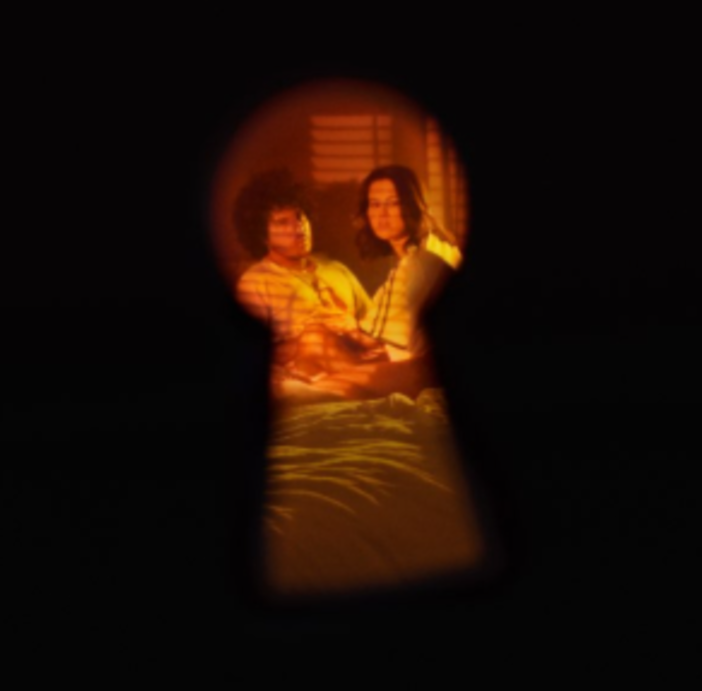A Complete Unknown was released to theaters on Christmas Day, 2024, giving audiences the long-anticipated biopic of renowned singer-songwriter Bob Dylan. The film follows Dylan, played by Timothee Chalamet, and takes viewers through the progression of his career, examining the personal dramas and self-growth that came along with it.
Rather than depicting Dylan’s life progression from childhood, the film follows a memoir-style narrative, focusing specifically on Dylan’s rise to fame. A Complete Unknown begins in 1961 as Dylan sets about to find his idol, singer-songwriter Woody Guthrie (Scoot McNairy). Stepping off the bus, guitar case in hand, Dylan wanders New York’s streets seeking the Greystone Park Psychiatric Hospital where Gurthie is hospitalized with Huntington’s disease. When Dylan arrives, singer-songwriter Pete Seeger (Edward Norton), a friend of Gurthrie’s, sits beside his hospital bed. There, Dylan is welcomed by Guthrie and Seeger and plays a song for the two men. They are left impressed by the young Dylan’s musical abilities, and from there, Seeger introduces Dylan to the local folk music scene, landing him gigs and thus catapulting his career into the limelight.
The cast’s performances in A Complete Unknown were the most defining part of the film. Whether they were real individuals Dylan encountered amidst his rise to fame or film-adapted versions of characters loosely inspired by reality, the main cast portrayed the nuanced interpersonal relationships well.
A notable example was the character of Sylvie Russo. Portrayed by Elle Fanning, Russo is a fictional character based on Dylan’s ex-partner Suze Rotolo–a Congress of Racial Equality (CORE) member, anti-nuclear activist and artist. Rotolo as an individual was not in the limelight, as her relationship with Dylan spanned from 1960 to 1964 after the two met at a folk music performance at a church–which is honored in the film. Despite Sylvie’s character being portrayed as a foil-like figure in Dylan’s story, Fanning’s performance gives depth to the character. Viewers can acknowledge her significance in Dylan’s life, and the movie pays tribute to her virtue.
An interesting creative choice was the film’s depiction of Dylan and the aspects of his personality that were deliberately showcased to the audience. Put bluntly, despite the script being greenlit by Dylan himself, his portrayal in the film made him out to seem like a morally questionable person. Throughout the film, Dylan is reckless and does little to acknowledge the people who have supported him through his rise to fame. He carelessly toys with the emotions of his romantic partners and makes immature decisions.
This isn’t to say that Dylan is presented solely as an unlikeable individual, the film makes an effort to highlight his ambition and unwavering individualism, even if he started out in a traditional and sometimes restricting genre like folk. Dylan never once abandons his sense of self or compromises his values amidst his rise to fame. Despite Dylan having a plethora of flaws, the audience can respect his grit, and can’t help but root for him as he navigates the 1960s music scene alongside his issues.
However, the film wasn’t without its faults. The movie’s greatest flaw was its disorienting pacing, stemming from frequent and abrupt time skips. Numerous times throughout the film, scenes unexpectedly jump several years into the future, where unexplained changes have undergone. In one scene, Dylan has had turbulent relations with his girlfriend, in the next–without explanation–he’s hand-in-hand with a new woman. These transitions temporarily threw off the viewing experience and caused confusion.
In terms of cinematography, the film has received relatively positive reviews, and rightfully so. For one, A Complete Unknown’s full embrace of 1960s American visual aesthetics helps make the entire film feel cohesive despite some of its issues with pacing. The film also integrated pivotal historical moments of the 1960s. It complemented Dylan’s endeavors in folk and rock music, and amplified the film’s feeling of grandeur, as it coincided with a time of rapid change for both American music and history. A Complete Unknown was not a film where vintage fashion, 60s New York scenery and period-accuracy were sacrificed for the sake of adapting to modern audiences.
As someone who knew little about Dylan’s personal life or rise to fame, A Complete Unknown was an enjoyable biopic that depicted Dylan authentically, rather than a media-friendly glorified version of himself. While it’s not the type of film to watch alongside friends after a long week, it would be insightful and amusing for fans of the 1960s era of music history. Although A Complete Unknown is not a film that warrants a strong desire to rewatch, the movie is solid–with strong performances, enticing visuals and a satisfying musical score.
















Ian mackenzie • Jan 29, 2025 at 1:07 pm
Enjoyed it very much joan biaz was brilliant. What a honey.